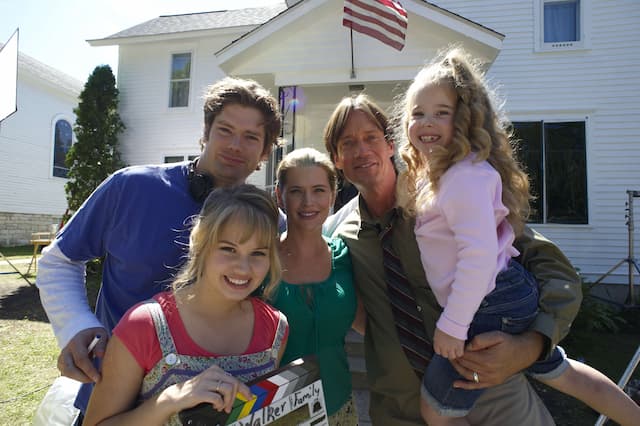PART 3: Twisting Out the Tension — Solve That Puzzle, Solve Your Life! - The DV Walking Wounded:

So, you’ve got a traditional 3×3 Rubik’s Cube sitting on your shelf—or you just picked one up for the first time—and you’re thinking: How the heck does anyone actually solve this thing? First off, welcome. Second: You absolutely can solve it. No, really. It’s not about being a genius or having superhuman logic. It’s about following steps, staying calm, and (here’s the real kicker) learning to be okay with a little bit of trial and error. Rather like surviving in life, right?
In this post, I’ll break it down as simply and painlessly as possible, the steps to solving our real-life Tesseract. I won’t throw crazy algorithms at you (yet). Instead, we’ll walk through the mindset, the steps, and the lessons you’ll pick up along the way. Also, your 3×3 can be by any manufacturer, so no worries there. Ready? Let’s get started!
Step 0: Approach It With Curiosity, Not Panic
Most people twist a cube for five minutes, get frustrated, and give up. But solving a cube isn’t about blind luck or magic—it has a methodology to it. Think of it like a recipe. You might burn the dish the first few times, but once you learn the ingredients and order, it just… works. Every dang time!
Step 1: Get to Know the Cube
Here’s the deal:
- A Rubik’s Cube has 6 faces, each with 9 squares on each face.
- The center pieces never move. So the white center? That face will always be white when solved.
- The corner pieces have 3 colors that are viewable.
- The edge pieces have 2 colors that are viewable.
The goal: Match all the colors on each face by getting the right pieces in the right place. I first learned to do one face at a time. You might try that, to boost your confidence. The real key is to solve them simultaneously, but we will work up to that, okay?
Step 2: Solve the White Cross
Start with the white side.
You want to form a plus sign (cross) on the white face, but the white edges also need to line up with the center color on the side faces (not just slap a cross together and call it good).
What this teaches you: Precision matters. It’s not enough to “look” right—things have to be right from every angle. Again, kind of like life, huh?
Step 3: Finish the White Corners
Now that your white cross is in place, work on inserting the white corner pieces into the top layer so that the whole white face is done, along with matching sides.
Yes, it takes some twisting. And yes, you might mess up your cross a few times before you get the hang of it. That’s okay.
What this teaches you: Progress isn’t always linear. Sometimes you mess something up just to learn how to fix it. And sometimes, you even have to go back a few steps, to move forward better. I just LOVE all the life lessons we are learning from solving this cube!
Step 4: Solve the Middle Layer Edges
Turn the cube so white is now on the bottom. You’re working on the middle layer now—specifically, putting the edge pieces in their correct spots without disturbing the white face you just completed.
There’s a specific move for this, and once you learn it, you’ll feel like a wizard.
What this teaches you: Muscle memory and patience. You repeat moves that don’t feel like they’re doing anything—until they do.
Step 5: Make a Yellow Cross on Top
Yellow is now your new focus. You’ll probably see a dot, an L shape, or a line. Your job is to manipulate the top layer (without ruining everything else) to turn it into a yellow cross. My autistic son corrected me and told me that it was more accurately a plus sign, but I prefer cross always!
This is the part where it starts to feel like magic. You follow moves that seem weird, but they work.
What this teaches you: Trust the process. Even when things look messy, you’re heading in the right direction.
Step 6: Solve the Yellow Corners
Get the yellow corners in the right spots—even if they’re not oriented properly yet.
You’ll likely be muttering “this makes no sense” as you rotate the cube over and over. But soon, the corners fall into place.
What this teaches you: Order comes before perfection. Get things where they belong before worrying about how they look.
Step 7: Finish the Yellow Side (and Solve the Cube!)
Now, orient the yellow corners and fix the final edges.
This is the home stretch. A few moves repeated carefully, and BAM—it clicks. Every side lines up. It’s a beautiful, oddly satisfying moment.
What this teaches you: Don’t give up at the end. You’re closer than you think.
Final Thoughts: What the Cube Teaches You Beyond Colors and Moves
Solving a Rubik’s Cube isn’t just about matching colors. It’s a crash course in:
- Resilience: You will mess it up. And then un-mess it.
- Problem-solving: It’s not about guessing—it’s about strategy.
- Mindfulness: Focusing on each move, being present, and not rushing.
- Delayed gratification: Solving it feels GOOD—but only because it took effort.
So yeah, solving a cube might not cure your stress or help you write your next novel, but it will teach you to think differently—and remind you that what looks impossible can be broken down into simple, repeatable steps. I personally utilize my cubes when I have writer’s block.
As a computer teacher, I used the 3×3 to teach about dimensions and algorithms, as well as persistence, mind-set, and problem solving. It was a great secondary school STEM tool. I had various ones in a milk crate on my desk. The teens I taught loved them! I had curriculum from Rubiks.com even, that I used. I uploaded this solving video (below) on their tablets. I had certificates for if they solved it. I also had a certificate if they taught several others to solve it. This was such a huge motivator for my students to get their work done in order to fiddle with the “twisty” cubes. Several told me that they NEVER thought they could solve something like that because they thought they weren’t “smart enough” (they were incarcerated teens), so that always prompted a conversation about how they really could do anything they put their minds to! Cubes can save lives, people! I’ve seen it first hand
And hey, once you’ve mastered the 3×3, there’s always the 4×4. Or the triangle one. Or the cube that turns into a snake. But let’s not get ahead of ourselves. Here is a certificate you can earn via cube trivia: https://www.sainiji.com/free-quiz-on-rubiks-cube-with-certificate/.
For now, happy twisting. You’ve got this!
Watch a Step-By-Step Video Here:












